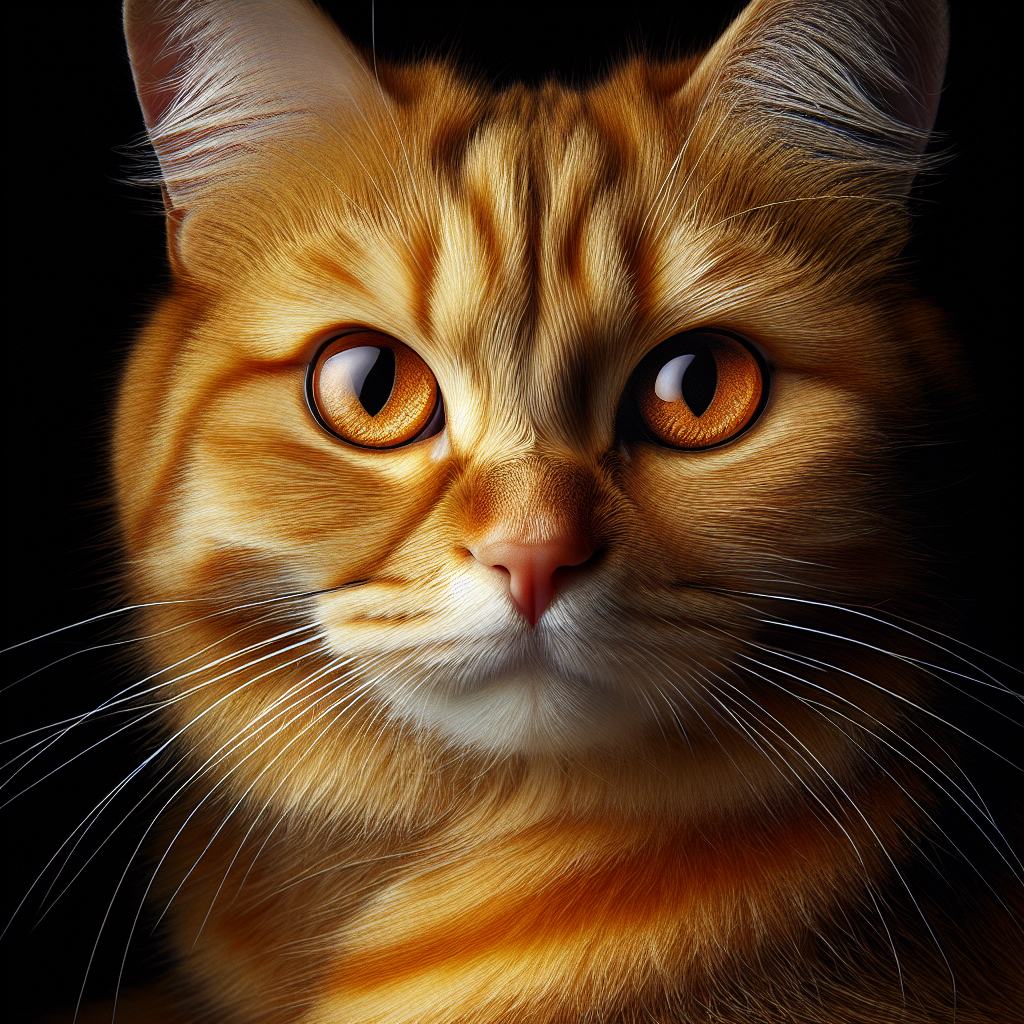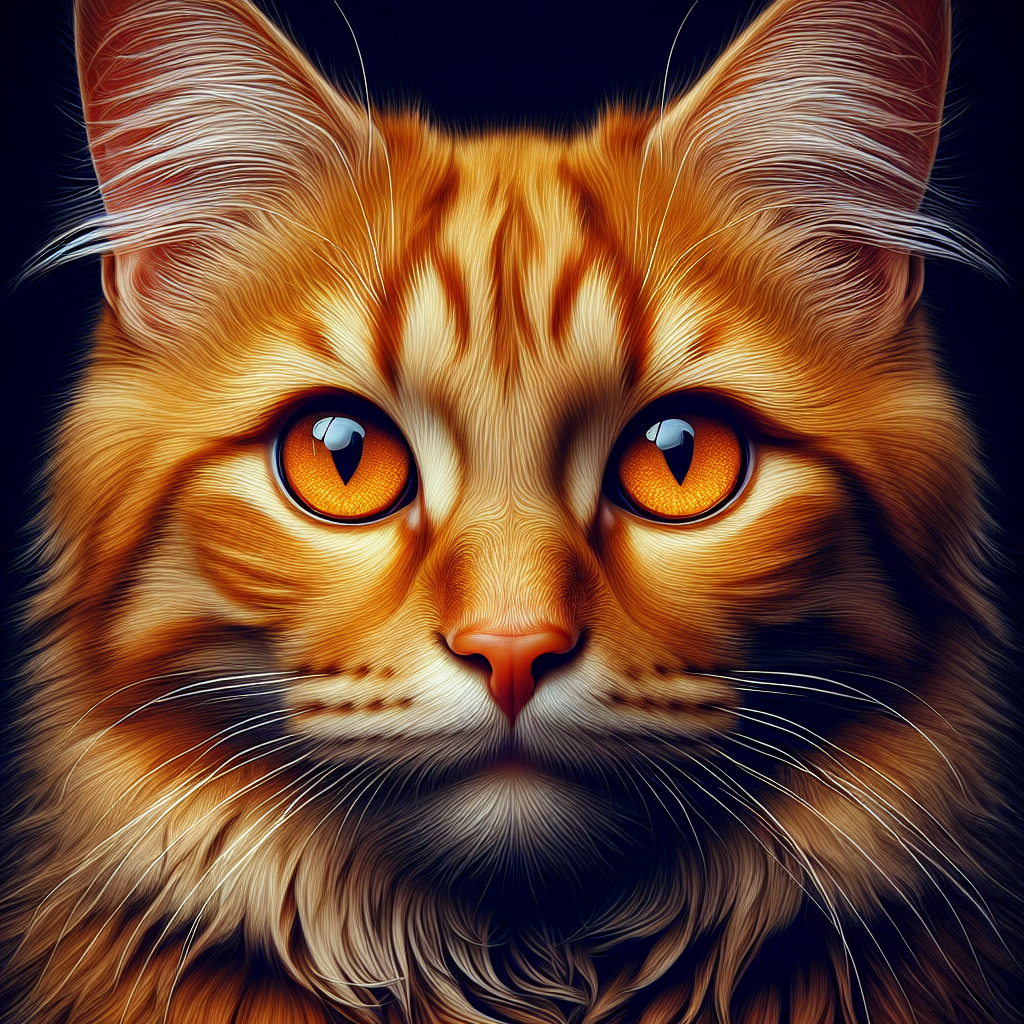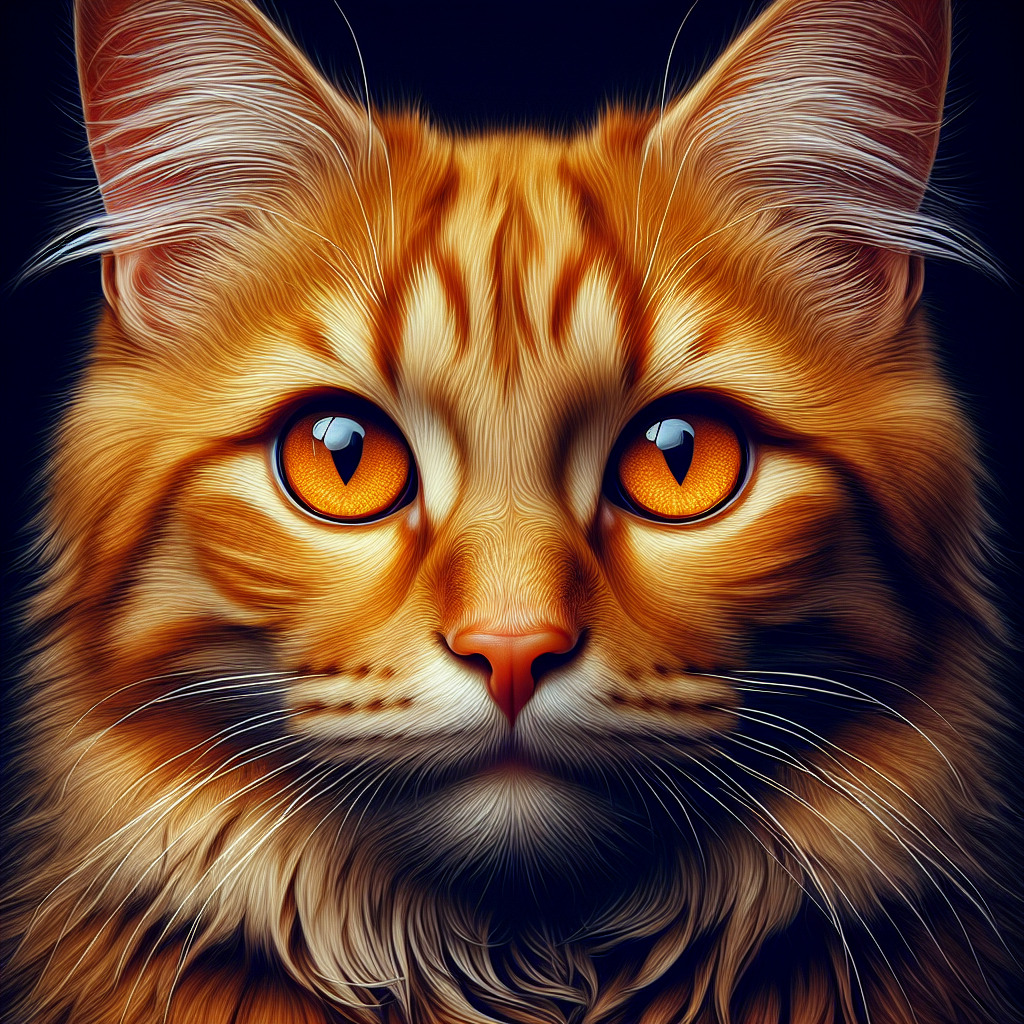Orange tabby cats are often associated with being male, but is there any truth to this belief? In this article, we will dive into the myth surrounding orange tabbies and their gender. Whether you’re a cat lover or simply curious about feline traits, join us as we explore the fascinating world of orange tabby cats and uncover the truth behind their gender tendencies. Prepare to be surprised by what you discover!
History of Orange Tabby Cats
Origins of Orange Tabby Cats
Orange tabby cats have a rich and fascinating history that dates back many centuries. These cats are believed to have originated in Egypt, where they were highly regarded and even worshipped. Ancient Egyptian artwork often depicted cats, including orange tabbies, as symbols of protection and good fortune. From there, these cats made their way to other parts of the world through trade and exploration.
Popularity and Cultural Significance
Orange tabbies have always held a special place in the hearts of cat lovers. Their striking coat color and distinct markings make them a favorite among many pet owners. In various cultures, orange tabbies are often associated with positive traits such as luck, wealth, and adventure. They have been immortalized in literature, movies, and popular culture, further contributing to their popularity and cultural significance.
Study of Coat Color Genetics
The study of coat color genetics in cats has been a fascinating field of research for scientists and breeders alike. Understanding the genetics behind why orange tabby cats have their unique coat color has been a topic of interest. Through extensive research and studies, experts have been able to unravel the mysteries of orange tabby genetics and shed light on the factors that influence their coat color and gender distribution.
The Genetics of Orange Tabby Cats
Role of Sex Chromosomes
The sex chromosomes play a crucial role in determining the gender and coat color of orange tabby cats. Unlike humans, where the presence of the Y chromosome determines male gender, in cats, it is the presence of two X chromosomes that determine females. Male cats, on the other hand, have one X and one Y chromosome. This difference in sex chromosome composition is a fundamental factor in understanding the gender distribution among orange tabby cats.
MC1R Gene Mutation
The MC1R gene mutation is responsible for the distinctive orange coat color in tabby cats. This gene controls the production of pigment in the hair follicles, and a mutation in this gene leads to the production of red and yellow pigments, resulting in an orange coat. This genetic variation is what sets orange tabby cats apart from other coat color variations.
Different Shades of Orange
Orange tabby cats come in a range of shades, from bright and vibrant oranges to more muted, ginger-like tones. The variation in shades can be attributed to a combination of genetic factors, including the presence of certain genes and genetic mutations.
Genetic Factors Influencing Gender
The gender of orange tabby cats is determined by a complex interplay of genetics. While the X chromosome determines female gender, the presence of specific genes and genetic variations can influence the likelihood of a cat being male or female. These factors contribute to the observed gender distribution within the orange tabby cat population.

Gender Ratio in Orange Tabby Cats
Common Perception of Male Dominance
There is a common perception that orange tabby cats are predominantly male. This belief may stem from the fact that male cats often exhibit more dominant and territorial behaviors. However, it is essential to understand that gender is not solely determined by coat color, and there is more to the gender ratio of orange tabbies than meets the eye.
Scientific Studies on Gender Distribution
Scientific studies have been conducted to determine the gender distribution among orange tabby cats. These studies have shown that while there may be a slight skew towards males in some populations, the overall gender ratio is not significantly biased. These findings challenge the prevailing belief that orange tabbies are predominantly male.
Statistical Data and Findings
Statistical data supports the notion that gender distribution in orange tabby cats is more balanced than initially thought. While the exact gender ratio may vary depending on the population being studied, comprehensive studies have shown that the difference between males and females is not substantial. This highlights the importance of considering accurate data and factual information when discussing the gender distribution of orange tabby cats.
Factors Influencing Orange Tabby Cat Gender
Genetic Makeup of the Parents
The genetic makeup of the parents plays a significant role in determining the gender of orange tabby cats. The inheritance of sex chromosomes from both the mother and father impacts the likelihood of producing male or female offspring. While genetics do contribute to gender determination, it cannot be solely relied upon to predict the gender distribution in a litter of orange tabbies.
Influence of Other Coat Color Genes
The presence of other coat color genes can influence the gender distribution among orange tabbies. Factors such as the agouti gene, which affects the pattern and distribution of colors in the coat, can contribute to the variations observed in both males and females. The interplay between various coat color genes adds another layer of complexity to understanding the gender distribution in orange tabby cats.
Environmental and Hormonal Factors
Environmental and hormonal factors can also influence the gender of orange tabby cats. These factors include prenatal hormone exposure, which can impact the development of sexual characteristics. While the exact mechanisms are still being studied, it is clear that the environment and hormonal factors play a role in shaping the gender distribution observed among orange tabby cats.
Randomness and Probability
It is important to acknowledge that gender distribution in orange tabby cats is not an exact science and can exhibit variations due to random chance. Like any biological process, there is an element of uncertainty and probability involved in the determination of gender. While certain factors can influence the likelihood of a cat being male or female, it is not an absolute guarantee.

Female Orange Tabby Cats
Frequency of Female Orange Tabby Cats
Contrary to popular belief, female orange tabby cats are not as rare as some may think. While the overall gender ratio may show a slight skew towards males, the frequency of female orange tabby cats is still substantial. It is important to recognize and appreciate the presence of female orange tabbies, as they contribute to the diversity and beauty of these cats.
Unique Genetic Markers
Female orange tabbies possess unique genetic markers that contribute to their coat color and overall appearance. These markers, combined with other genetic factors, contribute to the orange tabby traits observed in females. Understanding the genetic makeup of female orange tabbies helps debunk the myth that orange fur is solely associated with male gender.
Health and Behavioral Traits
Female orange tabby cats share many health and behavioral traits with their male counterparts. These cats are known for their playful and outgoing personalities, as well as their natural hunting instincts. They make loving and devoted companions, just like any other orange tabby cat, regardless of gender.
Male Orange Tabby Cats
Common Presence of Male Orange Tabby Cats
Male orange tabby cats are often more visible and readily recognized due to their territorial and dominant behaviors. These cats exhibit traits typically associated with male cats, such as marking their territory and displaying dominance. Their vibrant and bold coat color adds to their striking presence, making them stand out among other cats.
Territorial and Dominance Traits
Male orange tabby cats have a strong territorial instinct and often exhibit dominant behaviors. They are more likely to engage in territory marking and may display aggression towards other cats. These traits are not exclusive to male orange tabbies but are more commonly observed due to the influence of hormones and genetic factors.
Hunting and Social Behavior
Male orange tabbies, like many other male cats, possess innate hunting instincts. They are skilled hunters and may display a more independent and adventurous nature. While individual personalities vary, male orange tabbies often enjoy exploring their surroundings and engaging in social interactions with other cats and humans.
Cat Breeding and Orange Tabby Cats
Cat Breeding Practices and Orange Tabbies
Cat breeders often strive to produce orange tabby cats due to their popularity and unique coat color. Breeding practices involve careful selection of parent cats based on their coat color genetics to produce desired traits in their offspring. Responsible breeders focus on maintaining the overall health and well-being of the cats while selectively breeding for specific coat colors, including orange tabby.
Selective Breeding for Orange Tabby Traits
Selective breeding allows breeders to enhance certain traits, including the orange tabby coat color, in subsequent generations of cats. By pairing cats with desirable coat color genetics, breeders can increase the chances of producing orange tabby kittens. However, it is important to note that selective breeding should always prioritize the cat’s health and ensure genetic diversity.
Breeding Techniques to Influence Gender
There are no known breeding techniques that can guarantee the gender distribution of orange tabby cats. While certain genetic combinations and factors may influence the likelihood of producing males or females, the outcome of a breeding program is still subject to chance and individual variations. Responsible breeders focus on producing healthy kittens with considerations for overall genetic diversity rather than solely targeting a specific gender.
Myth vs. Reality: Debunking Stereotypes
The Association between Orange Fur and Male Gender
The association between orange fur and male gender is a common myth that has persisted over time. It is essential to debunk this stereotype and educate the public about the true gender distribution among orange tabby cats. The color of a cat’s coat does not determine its gender, and there are numerous female orange tabby cats that defy this stereotype.
Understanding the Inaccuracy
The inaccuracy of associating orange fur exclusively with male gender can be attributed to a combination of factors, including cultural perceptions, limited information, and the prominence of male orange tabbies in popular media. By understanding the underlying genetics and statistical data, we can challenge these inaccurate beliefs and promote a more accurate understanding of the gender distribution among orange tabby cats.
Educating the Public about Gender Ratio
Education is key in debunking stereotypes and promoting a better understanding of the gender ratio among orange tabby cats. By disseminating accurate information through various platforms, we can help shift perceptions and address common misconceptions. It is crucial to emphasize that gender should not be solely defined by coat color, and every orange tabby cat, regardless of gender, deserves equal love and appreciation.
Exploring Cultural Perceptions
Origins of Gender Stereotypes
Cultural perceptions and gender stereotypes have shaped our understanding and interpretation of various aspects of life, including our associations with certain colors, animals, and traits. The history of associating orange tabby cats with a specific gender may stem from traditional gender roles and societal expectations that have influenced our perception of these cats.
Cultural Representations of Orange Tabby Cats
Orange tabby cats have been featured in numerous cultural representations, including literature, art, and folklore. In some cultures, orange tabbies are seen as symbols of luck, wealth, and adventure. These cultural representations have contributed to the popularity and cultural significance of orange tabby cats, further perpetuating certain stereotypes and associations.
Influence on Adoption and Preferences
Cultural perceptions and stereotypes can influence adoption preferences, with some potential adopters favoring certain traits or coat colors based on societal influences. The belief that male orange tabbies are more common may lead to a bias towards adopting male cats over females. By raising awareness about the diversity and beauty of all orange tabby cats, we can encourage more inclusive adoption practices.
Conclusion
The Diversity of Orange Tabby Cats
Orange tabby cats are a diverse group, encompassing cats of both genders and a range of coat color variations. Appreciating the diversity within this group helps further our understanding of these beloved feline companions and ensures that all orange tabby cats are recognized for their individual traits.
Appreciating Cats for Individual Traits
Every cat, regardless of coat color or gender, is unique and possesses their own set of characteristics and personality traits. By appreciating cats for their individuality, we can move beyond stereotypes and develop a deeper connection with our feline companions.
Acknowledging the Importance of Gender Neutrality
As we learn more about the genetics and gender distribution of orange tabby cats, it becomes increasingly evident that gender should not be the sole defining factor in our perceptions of these cats. Emphasizing the importance of gender neutrality allows us to appreciate and value all orange tabby cats, regardless of their gender, as beloved members of our families.

